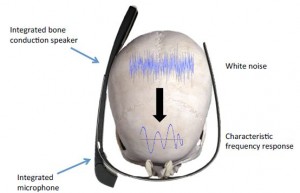Read about some of the best sounding concert halls, and how they are designed, on the web site Interesting Engineering.
Zoom’s new H3-VR ambisonic spatial all-in-one recorder
Zoom, who make portable audio recorders, have released the Zoom H3-VR recorder that has 4 microphones arranged in a tetrahedron to enable recording of ambisonic spatial audio.
Article on Calibration of Microphones
Engineers at PCB have published an interesting article at audioxpress.com on how microphones are calibrated.
Sound absorbing material from cigarette butts
I can see this recent article as a contender for an Ig Nobel prize
“Acoustical performance of samples prepared with cigarette butts”
Spanish researchers from Departamento de Física Aplicada, Escuela Politécnica, Universidad de Extremadura, measured the sound absorbing properties of cigarette butts. Given the enormous number of cigarette butts that get thrown away, which don’t decompose very well, it is great that someone tried to find a use for waste.
Use your skull’s vibration for authentication
Researchers from the University of Stuttgart, Saarland University, and Max Planck Institute for Informatics have shown that it is possible to use a skull’s unique response to vibration for authentication. The researchers vibrated a skull with white noise and measured the response. They were able to correctly identify users 97% of the time.
See the full paper here.
LISNR Lands Intel Capital and $10 Million in Series B Funding

A startup company LISNR has secured $10m in series B funding.
LISNR technology uses proprietary inaudible sound waves called SmartTones to connect devices. It works like existing technology protocol Bluetooth, except LISNR uses sound waves and does not require hardware or maintenance. Williams says LISNR technology has advantages over Bluetooth because it requires very little battery use and also boasts synchronization with a device in less than one-eighth of a second. Additionally, because the technology uses sound that you can’t hear, LISNR leverages existing hardware and network of audio that’s everywhere around us. This “speakernet” or “The Internet of Sound,” as Williams puts it, gives LISNR the ability to leverage a massive, existing network that’s all around us. “Anywhere there is a speaker or has the ability to broadcast audio, LISNR has the ability to turn that object or media into a data transmitting medium.”
Read the press release on the LISNR web site.
Why so many modern pop songs sound alike
You’ve probably thought that numerous pop songs sound similar to each other. An article on Public Radio International explains that is a fairly accurate deduction. The old-school way involved lyric and song writer sitting down together and composing a song. Now it is done in a production line and out-sourcing method.
Read the full article on pri.org.
Rossing Prize in Acoustics Education Awarded to Prof Yang-Hann Kim
Professor Yang-Hann Kim, from the Korea Advanced Institute of Science and Technology in Daejeon, has been awarded the 2015 Acoustical Society of America Rossing Prize in Acoustics Education.
The Rossing Prize is awarded to an individual who has made significant contributions toward furthering acoustics education through distinguished teaching, creation of educational materials, textbook writing and other activities. The Prize will be presented at the 170th meeting of the ASA on 4 November 2015 in Jacksonville, Florida.
Brüel & Kjær and Altair Partner Alliance
The Altair company, which makes the software Hyperworks and formed the Altair Partner Alliance, announced that Brüel & Kjær, one of the oldest sound and vibration instrumentation companies, is bringing its noise, vibration and harshness (NVH) software, Insight+, to HyperWorks customers. The Insight+ software enables designers to listen to the sound a vehicle would make from a virtual design.
Read the press releases on the Altair and the Bruel and Kjaer web sites.
Nissan “Truckumentary” on Noise, Vibration, Harshness
Watch a youtube “truckmentary” on Noise, Vibration, Harshness testing on the Nissan TITAN XD.




